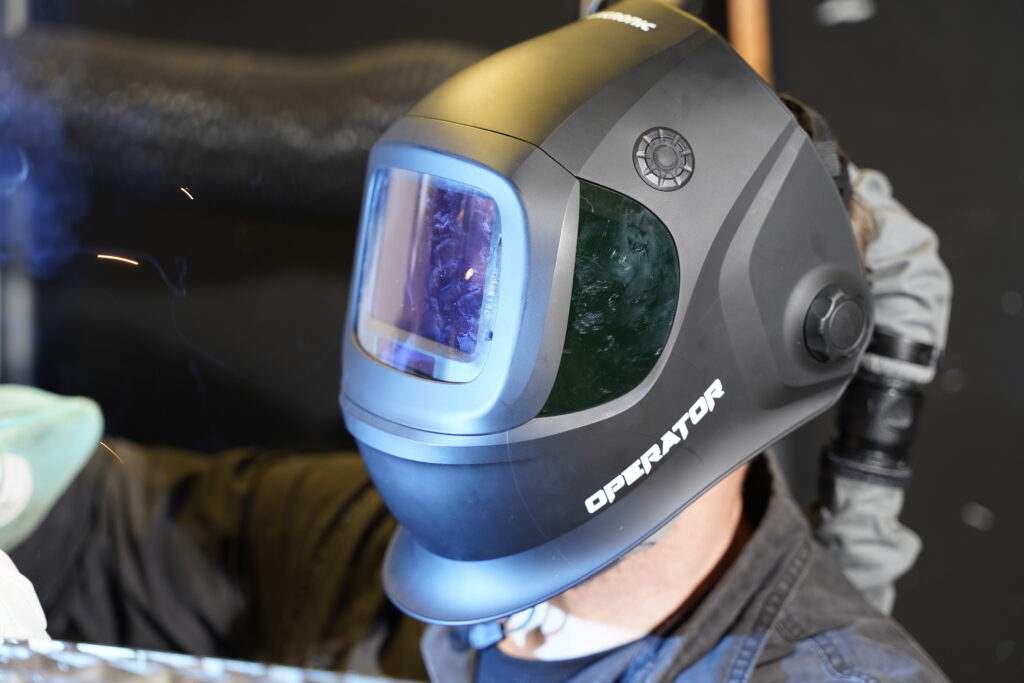Welders are often exposed to hazardous fumes that can pose significant health risks, yet many work environments lack proper protective measures such as local exhaust ventilation (LEV) and powered air purifying respirators (PAPRs). Research indicates that welders frequently face exposure to toxic substances, including metals and particles that can result in chronic health issues. A systematic assessment of welding processes reveals that many welders do not consistently employ safety equipment to mitigate these risks, leading to elevated levels of harmful exposure.
A prominent concern is the prevalence of elevated exposure to welding fumes, which can lead to serious health effects, including pulmonary disorders. A study highlights that exposure to metals like manganese is specifically associated with neurological effects, with symptoms resembling manganism due to significant health ramifications for welders who lack adequate protection (Balkhyour & Goknil, 2010). The inability to implement effective fume control measures compounds these dangers, as studies illustrated a substantial reduction in fume concentrations when employing LEV—showing reductions of up to 12 times in the welding zone when properly utilized (Knott et al., 2023). Despite these benefits, it appears that many welders’ workplaces do not have access to such systems.
Moreover, a study revealed that welding-related health risks are exacerbated in environments where there is a family history of smoking among welders, highlighting an intersection of lifestyle factors that increase vulnerability to respiratory complications (Roach, 2017). This notion is supported by health assessments indicating that welders exhibit a deterioration in pulmonary function correlating with their exposure levels to welding fumes and gases, often worsening due to insufficient protective measures (Mehrifar et al., 2019). Thus, the impact of fume exposure is not limited merely to the welding profession but extends to overall occupational health and safety standards that are not sufficiently upheld in some regions.
The assessment of welder awareness of hazards and the utilization of personal protective equipment (PPE) suggests a significant gap in practice (Hassan et al., 2017; , Budhathoki et al., 2014). While it is well documented that proper PPE can combat the risks posed by welding fumes, many individuals still neglect to consistently use such equipment. Surveys in specific regions, such as Lahore, Pakistan, have demonstrated that although welders are aware of the potential dangers, their use of protective measures remains inadequate (Hassan et al., 2017). These findings underscore the necessity for more robust safety training and enforcement of equipment usage protocols in welding environments.
The existing literature emphasizes that many workers continue to operate in settings where protective measures like LEV and PAPRs are not standard, leading to increased incidences of respiratory and other occupational diseases. The prevalence of these issues points to a critical need for enhancing safety protocols and ensuring that welders are equipped and trained to utilize protective solutions effectively (Berger et al., 2021; , Budhathoki et al., 2016).
In summary, welder safety remains a significant concern as many lack proper protection against hazardous welding fumes, despite compelling evidence of the associated health risks. Enhanced regulations, training, and accessibility to protective equipment are crucial to improving the occupational safety and health of welders.
References
- Balkhyour, M. and Goknil, M. (2010). Total fume and metal concentrations during welding in selected factories in Jeddah, Saudi Arabia. International Journal of Environmental Research and Public Health, 7(7), 2978-2987. https://doi.org/10.3390/ijerph7072978
- Berger, F., Bernatíková, Š., Kocůrková, L., Přichystalová, R., & Schreiberová, L. (2021). Occupational exposure to nanoparticles originating from welding – case studies from the Czech Republic. Medycyna Pracy. https://doi.org/10.13075/mp.5893.01058
- Budhathoki, S., Singh, S., Niraula, S., & Pokharel, P. (2016). Morbidity patterns among the welders of Eastern Nepal: A cross-sectional study. Annals of Occupational and Environmental Medicine, 28(1). https://doi.org/10.1186/s40557-016-0151-y
- Budhathoki, S., Singh, S., Sagtani, R., Niraula, S., & Pokharel, P. (2014). Awareness of occupational hazards and use of safety measures among welders: A cross-sectional study from Eastern Nepal. BMJ Open, 4(6), e004646. https://doi.org/10.1136/bmjopen-2013-004646
- Hassan, S., Nasir, U., Anwar, K., & Talib, U. (2017). An assessment of the level of awareness and reported complaints regarding occupational health hazards and the utilization of personal protective equipments among the welders of Lahore, Pakistan. International Journal of Occupational and Environmental Health, 23(2), 98-109. https://doi.org/10.1080/10773525.2018.1426259
- Knott, P., Csorba, G., Bennett, D., & Kift, R. (2023). Welding fume: A comparison study of industry used control methods. Safety, 9(3), 42. https://doi.org/10.3390/safety9030042
- Mehrifar, Y., Zamanian, Z., & Pirami, H. (2019). Respiratory exposure to toxic gases and metal fumes produced by welding processes and pulmonary function tests. The International Journal of Occupational and Environmental Medicine, 10(1), 40-49. https://doi.org/10.15171/ijoem.2019.1540
- Roach, L. (2017). The relationship of welding fume exposure, smoking, and pulmonary function in welders. Workplace Health & Safety, 66(1), 34-40. https://doi.org/10.1177/2165079917723927
